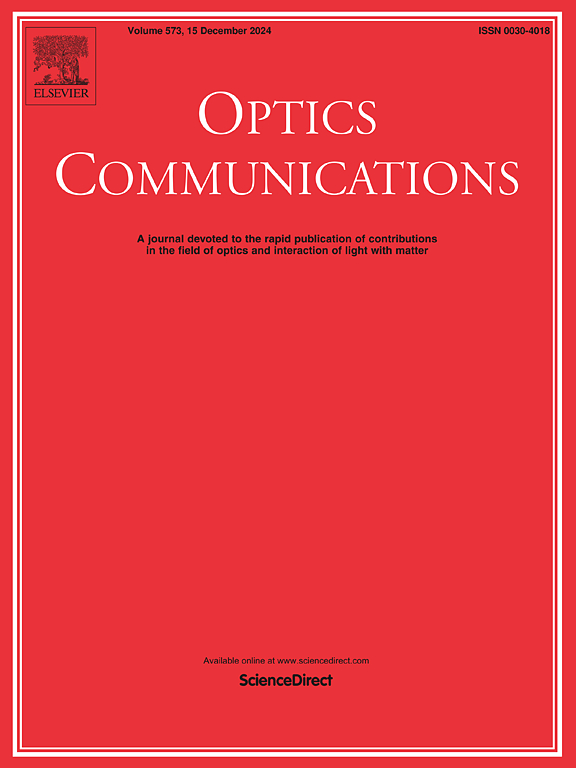基于高阶模式的选择性交叉不敏感双通道PCF-SPR传感器在肿瘤细胞检测中的温度和折射率同步传感
IF 2.5
3区 物理与天体物理
Q2 OPTICS
引用次数: 0
摘要
我们提出了一种基于双d型双核光子晶体光纤(PCF)的新型选择性交叉不敏感双通道表面等离子体共振(SPR)传感器,设计用于同时测量折射率(RI)和温度,并特别应用于癌细胞分析。传感器包括两个独立的功能通道:一个专用于RI测量,另一个配置为捕获RI和温度变化。使用高阶模式,而不是基模,提高了传感器的灵敏度。数值模拟表明,在可见光波长范围内,该传感器在折射率为1.32 ~ 1.41时的最大RI灵敏度为8000 nm/RIU,在- 40℃~ 100℃温度范围内的最大温度灵敏度为6 nm/°C。该传感器在可见光谱中工作,在癌细胞检测、食品安全、工业过程、环境监测以及生物和化学传感方面显示出巨大的应用潜力。本文章由计算机程序翻译,如有差异,请以英文原文为准。
Selective cross-insensitive dual-channel PCF-SPR sensor based on high-order modes for simultaneous temperature and refractive index sensing in cancer cell detection
We propose a novel selective cross-insensitive dual-channel surface plasmon resonance (SPR) sensor based on a dual-D-type dual-core photonic crystal fiber (PCF), designed for simultaneous refractive index (RI) and temperature sensing, with specific application to cancer cell analysis. The sensor comprises two independently functioning channels: one dedicated to RI measurement and another configured to capture both RI and temperature variations. The use of higher-order modes, rather than the fundamental mode, enhances the sensor's sensitivity. Numerical simulations demonstrate that, within the visible wavelength range, the sensor achieves a maximum RI sensitivity of 8000 nm/RIU for refractive indices between 1.32 and 1.41 and a maximum temperature sensitivity of 6 nm/°C across a temperature range from −40 °C to 100 °C. Operating in the visible spectrum, this sensor shows significant potential for applications in cancer cell detection, food safety, industrial processes, environmental monitoring, and biological and chemical sensing.
求助全文
通过发布文献求助,成功后即可免费获取论文全文。
去求助
来源期刊

Optics Communications
物理-光学
CiteScore
5.10
自引率
8.30%
发文量
681
审稿时长
38 days
期刊介绍:
Optics Communications invites original and timely contributions containing new results in various fields of optics and photonics. The journal considers theoretical and experimental research in areas ranging from the fundamental properties of light to technological applications. Topics covered include classical and quantum optics, optical physics and light-matter interactions, lasers, imaging, guided-wave optics and optical information processing. Manuscripts should offer clear evidence of novelty and significance. Papers concentrating on mathematical and computational issues, with limited connection to optics, are not suitable for publication in the Journal. Similarly, small technical advances, or papers concerned only with engineering applications or issues of materials science fall outside the journal scope.
 求助内容:
求助内容: 应助结果提醒方式:
应助结果提醒方式:


